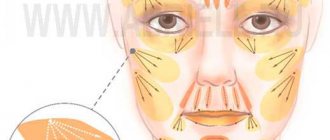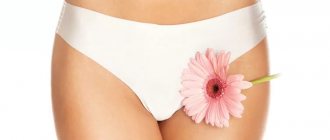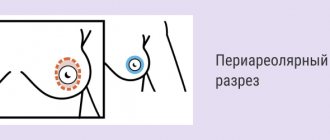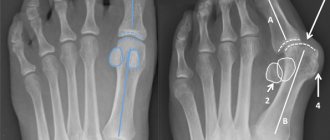Natural childbirth is a process that involves many muscles. Often, an obstetrician delivering a baby is faced with the need to perform an episiotomy, dissection of the perineum and partially the posterior wall of the vagina. This is a justifiable measure.
This manipulation is carried out to prevent spontaneous ruptures of the perineum, as well as to prevent possible birth injuries to the child. Initially, a controlled and sutured episiotomy was intended to save a woman from many possible postpartum problems: sexual dysfunction, damage to the anal sphincter, but the surgical intervention itself sometimes does not pass without a trace and affects the muscular frame and genital organs of the woman. In such cases, perineal plastic surgery and surgery on the pelvic floor muscles - levatoroplasty - are performed. In most cases, surgery is the only effective way to restore the strength of the pelvic floor muscles. The operation - vaginal levatoroplasty - allows you to get rid of unpleasant symptoms such as vaginal or rectal prolapse.
What is levatoroplasty
Levatoplasty (“levator” is a muscle) is an operation that allows you to restore the vaginal cuff (the lower third of the vagina, which contracts during sexual stimulation). Levators elevate the anus.
It often happens, especially with a deep episiotomy, that the levators are torn. Because of this, the woman subsequently feels discomfort and experiences difficulties during sexual intercourse associated with cicatricial deformation of the perineum, gaping and asymmetry of the vaginal vestibule.
Levators form a so-called orgasmic cuff (orgastic ring) at the entrance of the vagina. It is believed that they can be trained with Kegel exercises. But if the muscle has been torn or cut, it cannot be pumped up. We must first restore integrity. Therefore, the task of levatoroplasty is the formation of an orgasmic ring.
The difference between perineal plastic surgery and levatoroplasty
The difference between perineal plastic surgery and levatoroplasty is that perineal plastic surgery forms the geometry of the perineum, while levatoroplasty is aimed only at the formation of a functional orgasmic cuff, so important for the sexual harmony of sexual partners.
Most often, any type of colporrhaphy is performed with surgery on the pelvic floor muscles (levatoroplasty).
Indications for levatoroplasty
- Levatoplasty in combination with colporrhaphy and perineal plastic surgery is performed for the following indications:
- The appearance of a cystocele against the background of prolapse of the anterior vaginal wall;
- Partial prolapse of the uterus and prolapse of the vaginal walls with the appearance of rectocele;
- Loss of pelvic floor muscle tone and vaginal prolapse in women under 60 years of age;
- Complete vaginal eversion with the need for hysterectomy in women over 60;
- Stretching of the perineal muscles in combination with complete prolapse of the uterus and vagina in elderly women;
- Prolapse of the pelvic organs in combination with gynecological pathologies (cervical dysplasia, large uterine fibroids, ovarian tumor, etc.).
Each woman is individual, as is the anatomical structure of her genital organs, therefore, in each specific case, the surgeon personally determines the scope of surgical intervention. Most often, any type of colporrhaphy is performed with surgery on the pelvic floor muscles (levatoroplasty).
Sarvar Bakirkhanov comments: “To perform levatoroplasty, certain indications must be present: weakness, laxity or rupture of the levator. This is determined by examination by palpation. Often the levators are torn after an episiotomy. Subsequently, the woman has the sensation that the vagina is wide open. Where the muscle used to be stretched is now empty. The vagina seems to be pulled to the side, towards the side of the episiotomy.”
Young women often complain that water flows into the vagina when visiting the pool, and unpleasant sounds occur during sports. The reason for this is the deformation of the perineum. To eliminate these signs, surgery is indicated on the circular muscles, which are located on the surface. In this case, perineal plastic surgery (perineoplasty) is performed.
Colporrhaphy with levatoroplasty
In the initial stages of vaginal prolapse (degree 1-2), you can get by with conservative treatment methods (Beatrice laser vaginal rejuvenation, injection rejuvenation, plasma lifting). However, in more advanced stages of the disease, regardless of the woman’s age, plastic surgery, unfortunately, cannot be avoided.
- Depending on the stage of prolapse of a particular vaginal wall, several modifications of the operation are distinguished:
- Posterior colporrhaphy with levatoroplasty;
- Anterior and posterior colporrhaphy with levatoroplasty.
Types of operation
There are several types of levatoroplasty, depending on what pathological changes are intended to be corrected.
There are three degrees of vaginal prolapse, depending on the weakness of the muscle wall:
- downward displacement of the walls;
- displacement of the walls so that they extend beyond the vagina;
- complete loss - prolapse.
Displacement of the vaginal walls is often accompanied by displacement of the uterus. If the uterus is involved in the pathological process, then there is a high probability of cystocele, that is, hernial protrusion of the bladder, and rectocele - prolapse of the rectum. Such complications are a clear indication for surgery, as they contribute to impaired urination and defecation.
If there is no prolapse, then conservative treatment can be prescribed, which consists of performing special exercises to train the muscles. Sometimes the operation is performed for slight prolapse - at the request of the patient. There are several modifications of levatoroplasty, the technique is determined by the attending gynecologist. If necessary, levatoroplasty can be combined with surgery on the uterus.
Posterior colporrhaphy with levatoroplasty
Indications for colpoperineorrhaphy with levatoroplasty are prolapse of the posterior vaginal wall, cystocele, rectocele, dissatisfaction with the volume and shape of the vagina and, as a result, sexual dissatisfaction. As a result of posterior plastic surgery with levatoroplasty, the levators are strengthened, due to which the vagina becomes more toned and its volume decreases.
Posterior colporrhaphy with levatoroplasty: postoperative period
Recovery after surgery includes the exclusion of physical activity and restrictions on squatting and sitting at a right angle for up to 2 weeks.
Reminder for preparing for colporrhaphy
The operation should be carefully planned. An important condition for the postoperative period is the presence of a safe regimen for 1.5 - 2 months and, most importantly, comfort, support from family and friends, and harmony in the family. This must be understood by everyone to whom a woman gave children and as a result of which changes occurred in her body.
Doctor Bakirkhanov S.K.
1. At the time of the operation you must have:
- Miramistin or Chlorhexidine solution,
- Diflucan (Flucostat) 150 mg two capsules,
- Children's syringe,
- Gaskets,
- Adaptation circle when traveling by plane 3-4 days after surgery,
- Levomekol ointment (for combined labiaplasty),
- Compression garments for the lower extremities (to prevent thromboembolic complications).
Upon your pre-order, the clinic administrators will prepare the necessary kit at the time of hospitalization at the clinic.
2. If you are allergic, it is recommended to take antihistamines the day before and on the day of surgery. Avoid alcohol, aspirin and anticoagulants. If you have any allergic reactions to anesthetics, be sure to notify your doctor.
3. The day of the operation should preferably correspond to 4-5 days after the last menstruation.
4. The operation area requires no hair.
5. A day before surgery, you need to perform a cleansing enema yourself (especially important for plastic surgery of the posterior vaginal wall).
6. For the operation you should have:
- Gaskets,
- When performing one-stage labiaplasty, underwear is 1-2 sizes smaller than you usually wear (in order to create compression).
7. Your actions after the operation:
- Limit foods that cause constipation. Add vegetable oil to your diet, 1 tablespoon 3 times a day.
- Limiting physical activity and heavy lifting
to 1.5 - 2 months. Protect your abdominal muscles. When getting out of bed, do not put stress on your abdominal muscles by lifting yourself on your arms. - Sexual rest for 2 months
. To form an adequate and gentle scar between adjacent organs and the vagina, resting this area for 6-8 weeks is extremely important. - It is not difficult, but it is important to avoid sitting
at a right angle (7 days) and
squatting
for 2 weeks after surgery. These restrictions are due to the following. During the reconstruction of the perineum, the altered tissues are excised with scars, the prenatal geometry of the perineum is re-formed, and multi-layer sutures are applied to the structures of the small pelvis from the ligaments and fascia to the entrance to the vagina. The main work is carried out inside, in the vagina; on the outside there are only 4-5 sutures that form the aesthetics of the perineum. - Douching with an aqueous solution of Chlorhexidine in the morning and evening for the first 5-7 days after discharge.
- Treatment of the perineum with Miramistin solution after urination. When plastic surgery of the labia minora, it is necessary to treat the wound edges with Miramistin solution after urination (the minimum number of treatments should be 10-15 times, this will eliminate the use of antibiotics and other drugs).
- Terzhinan – vaginal tablets, one at night – 6 days (pre-moistened in water). See instructions.
- On the 4th and 7th days after surgery, take Diflucan (Flucostat) 150 mg, one capsule once.
- Continue the course of antibiotic therapy according to the following regimen: Cifran 500 mg, 1 tablet once a day for 5 days (40 minutes after meals). If you have allergic reactions, you will be offered another drug.
8. Follow-up examination on days 5-6 after surgery (2-3 days after discharge from the hospital).
9. Removal of sutures from the perineum on the 14th day. With labiaplasty, the sutures are removed during a similar period.
10. Layer-by-layer sutures placed in the vagina dissolve on their own within 1.5 - 2 months. During this period, you should follow a sanitation regimen: douche with Chlorhexidine solution every 3-4 days at night.
11. During the period of lifting restrictions and the beginning of sexual activity, it is recommended to use lubricants to soften sexual intercourse.
12. In case of emergency massive bleeding, immediately notify the clinic administration and call the ambulance service 03.
Anterior and posterior levatoroplasty with colporrhaphy
Suturing the pelvic floor muscles with simultaneous elimination of prolapse of the vaginal walls and perineal plastic surgery (colpoperineolevatoplasty) can reduce the size of the vagina, eliminate prolapse or prolapse of the pelvic organs, achieve an aesthetically attractive result and significantly improve the quality of sexual life.
Colpoperineorrhaphy with levatoroplasty – rehabilitation
After such a major surgical intervention, you must carefully follow all the instructions of your surgeon regarding the rules of the rehabilitation period. The duration of rehabilitation is 2 months. After this, it is allowed to gradually return to sports, and restrictions on sexual contact are lifted. With proper preparation and following recommendations in the postoperative period, the risk of complications is minimal.
Colporrhaphy with levatoroplasty - complications
- The main problems that may arise after any type of pelvic floor shaping surgery include:
- bleeding from the wound;
- injury to nearby neighboring organs;
- severe pain in the coming weeks after surgery;
- various urinary disorders;
- suppuration of a postoperative wound;
- recurrence of genital prolapse.
Levatoplasty: postoperative period
- Levatoplasty in combination with colporrhaphy and perineal plastic surgery is performed for the following indications. Restrictions on the rehabilitation period after levatoroplasty include:
- Avoid sitting for 2 weeks;
- The first days after pelvic floor muscle plastic surgery, it is recommended to adhere to a diet that involves eating semi-liquid food. This is necessary to avoid constipation.
- After levatoroplasty, you need to refrain from sports and heavy physical activity for 2 months.
- If you are planning a pregnancy in the near future, then at least a year and a half should pass after levator plastic surgery.
Possible complications
By choosing a competent and experienced plastic surgeon, you automatically reduce the risks of complications after levatoroplasty to a minimum. Our clinic is operated by gynecological surgeons with more than 20 years of experience, specializing in colporrhaphy and levatoroplasty, and having impressive medical experience.
Colpoperineolevatoplasty is a serious surgical intervention that requires the doctor to have extensive knowledge and experience in the field of operative gynecology and plastic surgery. Our specialists will return you women's health and the joy of intimate life.
How is the operation performed?
At the international clinic Medica24, levatoroplasty, colporrhaphy, and perineoplasty operations are performed by experienced, qualified surgeons in an operating room equipped with the most modern equipment. This guarantees better results, faster rehabilitation and virtually eliminates the risk of complications.
The day before the operation, the woman is hospitalized in a comfortable hospital room at the international clinic Medica24. Immediately after this, the entire range of necessary preoperative examinations is carried out, which includes:
- Consultation and examination by a doctor.
- Ultrasound examination of the pelvis.
- Ultrasound examination of blood vessels (USDG).
- General clinical and biochemical blood tests.
- Coagulogram (test for blood clotting).
- ECG.
- Colposcopy.
A visual examination of the vagina and cervix is performed using a colposcope - a miniature video camera on a thin, flexible fiber-optic conductor. This is necessary to avoid any surprises during the operation, as well as to eliminate contraindications.
Levatoplasty is possible only in the absence of inflammatory processes. If a preliminary examination shows the presence of colpitis (which often accompanies prolapse of the vaginal walls), anti-inflammatory therapy will be prescribed. The operation will be performed only after the inflammation is completely eliminated.
Levatoplasty and colporrhaphy are relatively low-traumatic interventions, which, however, require high precision, qualifications and skill of the surgeon. They are performed under epidural anesthesia or general anesthesia.
Levatoplasty consists of three stages.
The doctor cuts the skin covering the levator muscles of the vagina. After this, he selects the muscle-fascial bundles and stitches them together, forming a strong muscle frame. The incision is closed with a suture.
There are two main surgical techniques:
- Anterior levatoroplasty.
In this case, an incision is made in the anterior vaginal wall to create the correct tension of the levator muscles.Typically, such operations are performed for vaginal or bladder prolapse.
- Posterior levatoroplasty.
The doctor makes an incision in the posterior vaginal wall, after which the levator muscles are tightened.Surgeries are usually performed for prolapse and prolapse of the rectum, weakness of the pelvic floor muscles, consequences of episiotomy, and difficult childbirth.
After the operation, the woman is under medical supervision for 1 - 2 days in the hospital of the international clinic Medica24.
The stitches are removed after 5 - 7 days. Absorbable sutures dissolve on their own within 2 to 3 weeks.
We will call you back, leave your phone number
Message sent!
expect a call, we will contact you shortly










